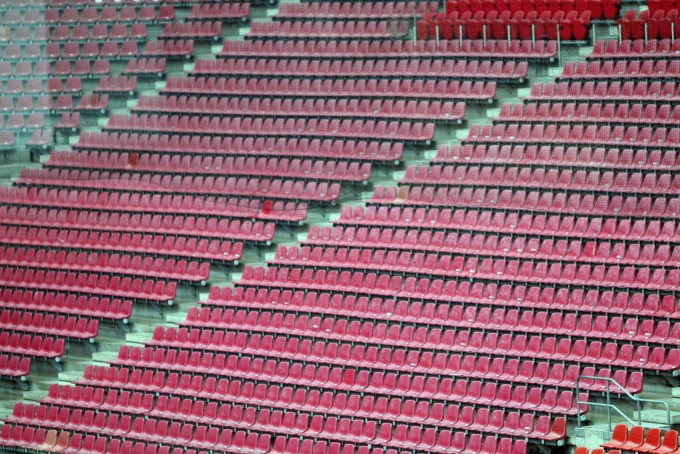
Due to Corona 19, a stadium in Bundesliga, Germany, is being played as an unspectator game without spectators. Courtesy of Cologne Sports University
Last year, the K-League 1 (first division) of professional football played 127 out of 162 games without a spectator due to a new coronavirus infection (COVID-19, Corona 19). Professional baseball also played 577 out of 720 games without spectators. The cheers of the crowd that gave strength to the players in professional sports also disappeared. As some local governments even banned cheering that could splatter, it became even more difficult for home fans to add the great advantage of home games to their cheering team. This situation is the same abroad.
Due to the prolonged COVID-19 outbreak, unattended games are increasing all over the world, but the analysis results show that players are still seeing the advantage of home games based on performance alone. Professor Fabian Bunderrich, a professor at the University of Cologne Sports in Germany, reported that the presence of spectators did not affect the performance as a result of analyzing the record of non-attendance and pre-Corona 19 in European professional football held last year. Sun released.
Corona 19 hit the sports industry in each country so much that it changed the schedule of the Tokyo Olympics. Ironically, however, it provided sports scientists with an ideal experimental environment for investigating whether avid home fans really influence the home team’s victory. As each country plays most of the sporting events without spectators, it is possible to compare performances with and without spectators.
The research team analyzed 1006 matches played without spectators in the professional leagues of 10 European countries, including the UK, Germany, and Spain during the 2019-2020 season, and 36882 matches held from 2010 to 2019, before the outbreak of Corona 19. The influence on the number of goals scored, valid shots, and fouls depending on the presence or absence of spectators was examined, and among them, the home game was analyzed intensively.
As a result of analyzing before and after Corona 19, the home win rate for games played without spectators was 55.5%, a little lower than 58.5% before Corona 19, where there was no spectator limit. In a game played without spectators at the home stadium, the overall home advantage was reduced by a third compared to before, but it did not disappear. The research team interpreted, “The home advantage decreased little by year even before Corona 19,” and “considering this trend, it is difficult to see it as the effect of a non-audience game, and it is not a level that deviates statistically.”
Rather, it turned out that the referee’s decision became more fair as the home fans disappeared due to an unattended game. It was found that the referees tended to inflict more fouls against the away team even before Corona 19, but when the crowd disappeared, they judged fouls at a similar rate to that of the home team. As a result of an analysis of fouls in major European football leagues before and after Corona 19 in August last year by the British Economist, the away team’s foul rate fell to 54% of all fouls in the presence of spectators and 50% after Corona 19.
Professor Bunderlich said, “If you want to have an advantage in the game, it is right to press the referee, but this is not fair play.” Said.
In Korea last year, when there were no spectators, the home team’s win rate was rather high. Last year, the average win rate for the home team in the K-League 1 of professional football was 51.6% in unattended games and 50% in the presence of spectators. The figure fell considering the fact that the home team’s win rate was 54.2% in 7845 games played from 1987 to 2019, when the K-League system settled. Even in professional baseball, the win rate for the home team was higher than 54.4% in the non-audience game and 46.7% in the presence of spectators.
